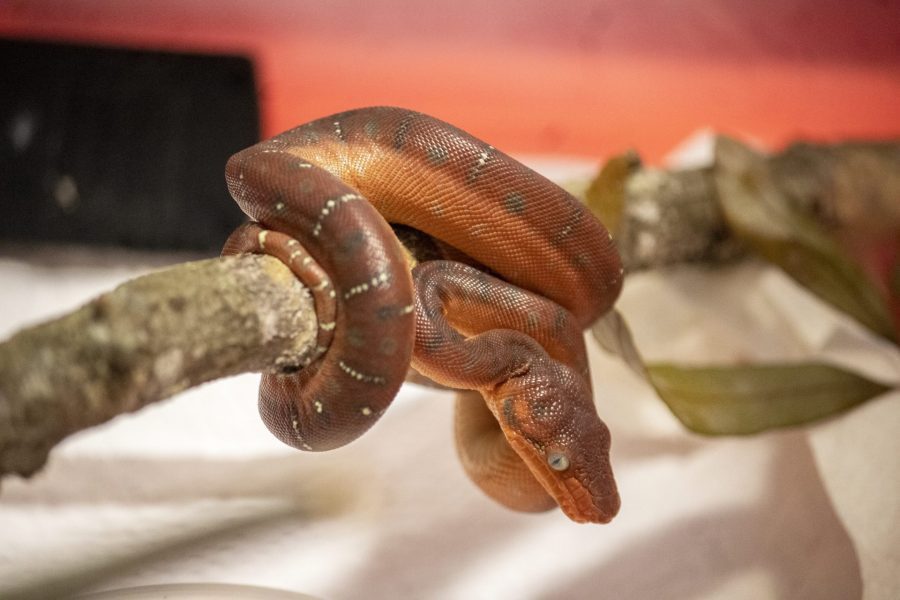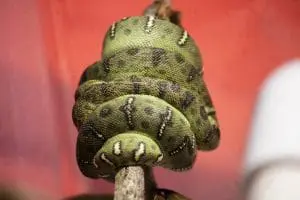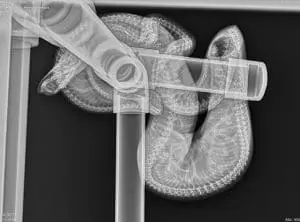

Emerald tree boas can be born red, orange or green! This is thought to help them camouflage.
What’s green and red and a little black and white all over?
Emerald tree boa babies – sort of!
Eight snakelets were born to mom, Sage. This is a first for our Zoo! You read that right – born, not hatched. Emerald tree boas are ovoviviparous, meaning they have live births. This species are arboreal, so it would be hard to lay and incubate eggs in the trees.
 Some of the babies are red, while others are green. This non-venomous species can be born red, green or orange, which is thought to help them camouflage with some of the brighter plants in their natural rainforest ecosystem. The red snakelets will begin to turn green in a few months.
Some of the babies are red, while others are green. This non-venomous species can be born red, green or orange, which is thought to help them camouflage with some of the brighter plants in their natural rainforest ecosystem. The red snakelets will begin to turn green in a few months.
We learned Sage was pregnant in January, when her animal care team noticed that her belly was extended. This species has a 7-8 month gestation, and it’s hard to know exactly when she might give birth. Our keepers tracked her abdominal swelling and desire to eat to learn when she might be close to giving birth. There’s limited space for both food and babies!
Emerald tree boas typically give birth every other year. They actually go through a significant weight decrease during pregnancy, again, most of that belly is filled with babies. Moms usually need to get back to an appropriate weight – often a yearlong process – before having snakelets again.
While it’s not uncommon for emerald tree boas to give birth in human care, there’s very little research in breeding them in a larger space like the Venom House. Very precise temperature and humidity levels are needed.
We recently shared that our Venom House habitats are bioactive systems, or self-sustaining biomes based on our animal residents’ native environment. Temperature and humidity monitoring devices, along with the ability to change the amount of UV exposure our animal residents receive, allow our keepers to simulate the seasons they might experience in the rainforest!

This x-ray was taken of Sage the emerald tree boa a day before she gave birth! Can you see the tiny baby skeletons?
This ability to simulate their natural environment, along with some competitiveness between our two male emerald tree boas, may have led to Sage’s pregnancy.
Since their birth, the babies have been living on their own in a behind-the-scenes space in Rainforest Revealed’s Venom House. Females of this species do not care for their young. The snakelets don’t need to eat until their first shed, which should happen in a few weeks. Once this occurs, they will be offered pinkies and small rat/mouse tails.
For now, our octuplets will be kept in the safety of those behind-the-scenes habitats. We’ll keep you updated on their progress through this blog and our social media channels!
Brevard Zoo is an independent, not-for-profit organization that receives no recurring government funding for our operating costs. Your generous support enables us to continue to serve our community and continue our vital animal wellness, education and conservation programs.
